Board Resignation Letter Template for Professional Use
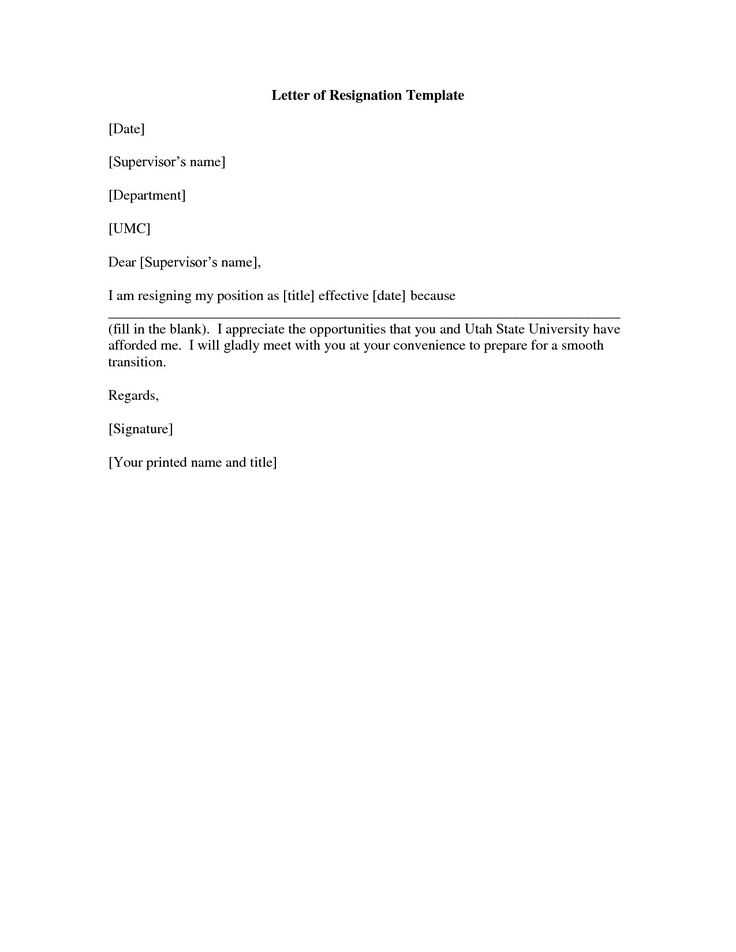
When stepping down from a high-level position, it’s important to communicate your decision clearly and respectfully. A well-crafted formal notification ensures that you leave on good terms and maintain professionalism throughout the process. This written communication serves as an official document that outlines your decision and provides essential details regarding the transition.
Creating an effective message for your departure doesn’t have to be complicated. By following a structured approach, you can ensure that your correspondence is concise, respectful, and properly formatted. A carefully thought-out communication minimizes confusion and reflects positively on you, even as you part ways with an organization or team.
In this guide, we’ll explore the critical components of a formal notification, tips for structuring your message, and common mistakes to avoid. Whether you are resigning from a leadership role or stepping down from a different position, understanding the essential elements of this process is key to making a smooth exit.
Why You Need a Board Resignation Letter
When leaving a high-level position, it’s crucial to have a formal and structured document that communicates your decision. This communication serves as an official record and helps ensure that your departure is clear, professional, and respectful. It’s not just about announcing your decision; it’s about leaving behind a positive impression and maintaining integrity within the organization.
Having this written communication in place provides clarity for all parties involved, especially when it comes to the transition process. It allows for a smoother handover of responsibilities and ensures that expectations are properly managed. This kind of documentation also serves as a reference for future situations, preserving a professional tone and minimizing misunderstandings.
Ultimately, taking the time to write a clear and concise departure note demonstrates your professionalism and commitment to the organization, even as you step away. It reflects well on you, helps avoid potential conflicts, and maintains your reputation long after your exit.
Benefits of Using a Template
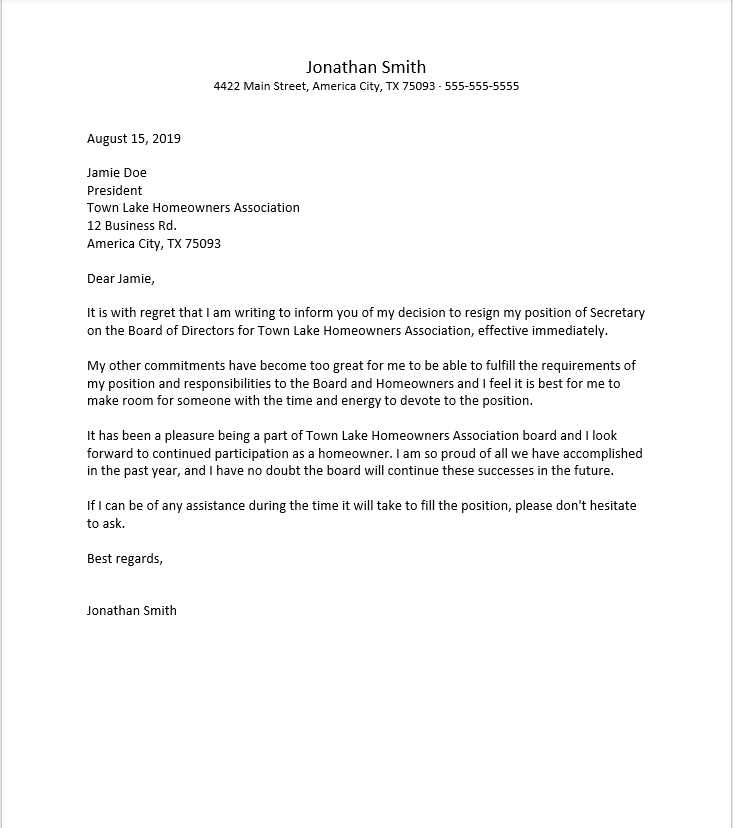
Utilizing a pre-structured format when drafting your departure notice offers numerous advantages. It ensures that all essential components are included, helping you avoid overlooking important details. A well-organized structure saves time and provides clarity, making the process more efficient for both you and the recipients of your message.
Time Efficiency
By using a pre-made structure, you eliminate the need to start from scratch, allowing you to focus on personalizing the content. This approach speeds up the process significantly, especially when dealing with time-sensitive situations where you need to step away promptly.
Consistency and Professionalism
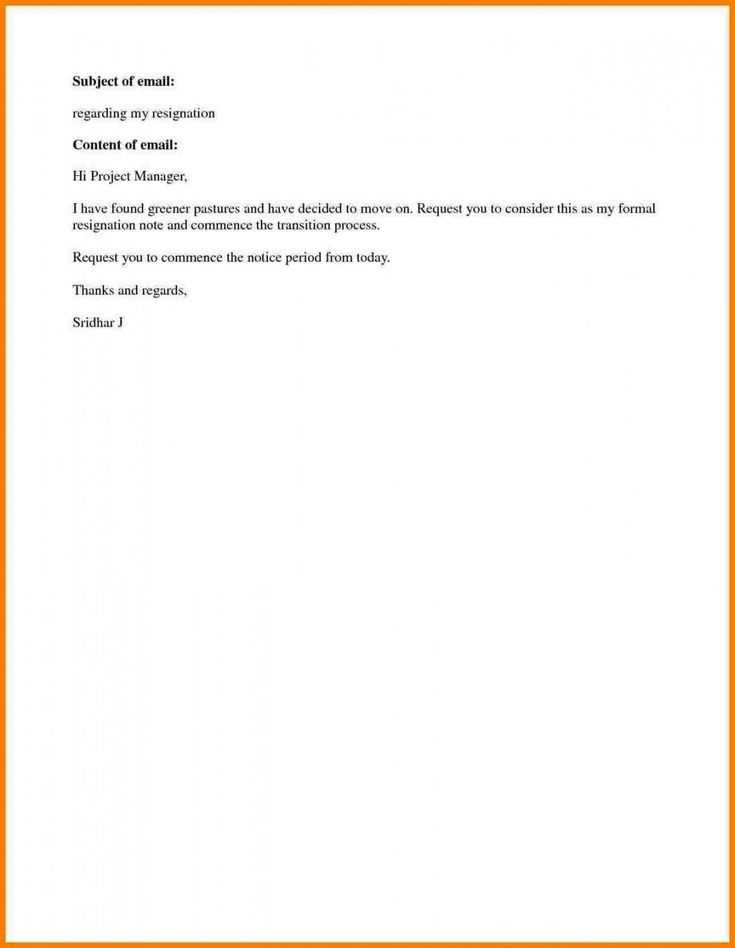
Following a format ensures consistency in tone and style, which is vital when communicating important decisions. It helps maintain a professional approach, even in moments of transition. Using a standardized layout also reflects a sense of responsibility and consideration for the organization.
Essential Information to Include
When drafting your formal departure notice, it’s crucial to include key details that ensure clarity and professionalism. The document should provide all necessary information to avoid confusion and facilitate a smooth transition. Properly structuring the content can also demonstrate your respect for the organization and the people involved.
Clear Announcement of Your Decision
Begin by stating your decision clearly and unambiguously. This ensures that there is no room for misinterpretation. It’s important to specify the date of your departure to give the organization adequate time to prepare for the transition.
Transition Plans and Next Steps
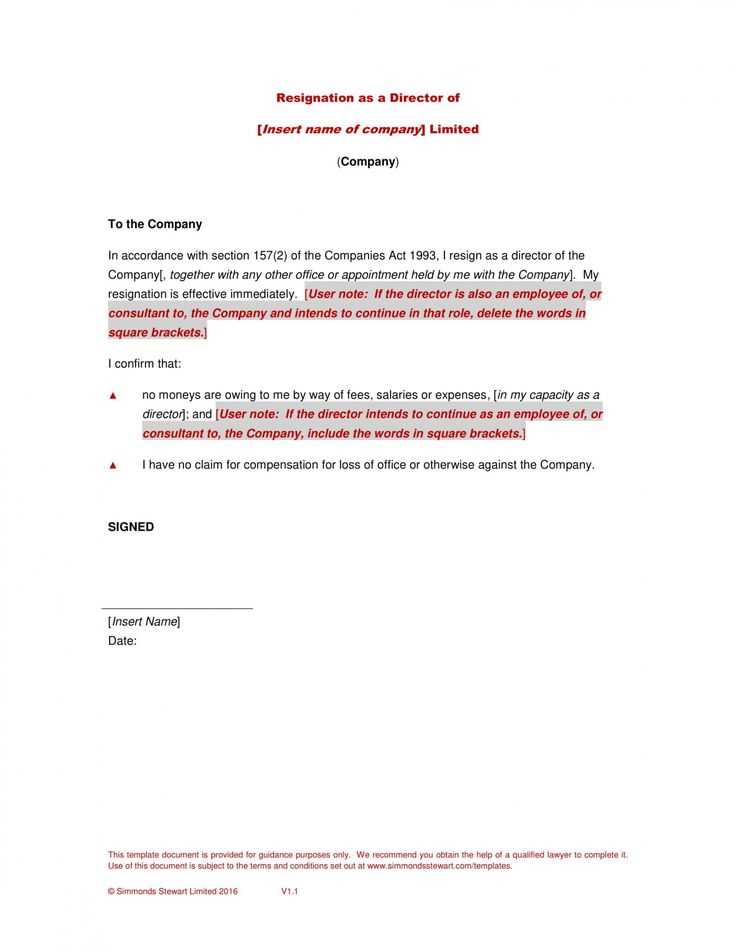
Include any relevant details about the handover process. This might involve mentioning the person who will take over your responsibilities or offering assistance during the transition period. Providing this information helps ensure a seamless shift of duties and reduces any potential disruption.
How to Write Professionally and Clearly
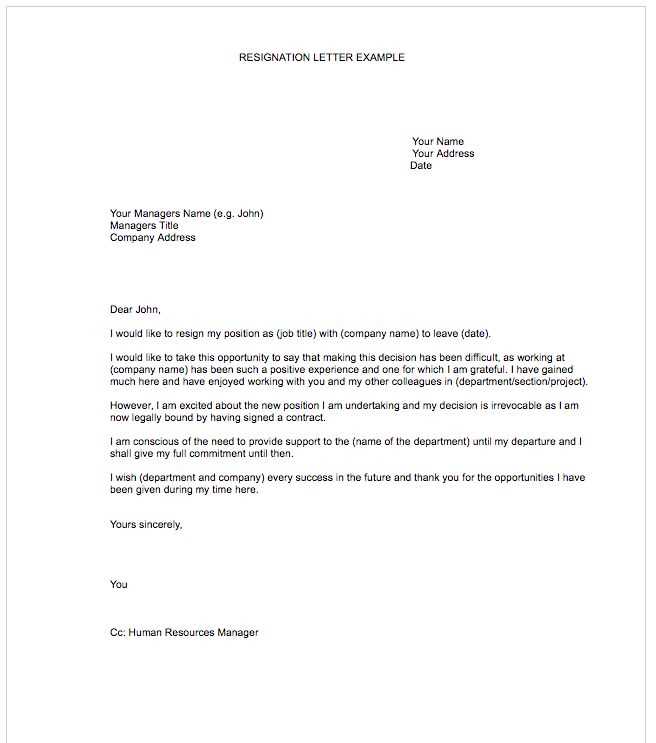
When composing your formal notification, it’s essential to maintain a tone that is both professional and concise. Clear communication not only helps convey your message effectively but also ensures that you are perceived as respectful and organized. Being straightforward and polite will foster goodwill, even as you transition out of your current role.
| Do’s | Don’ts |
|---|---|
| Be direct and clear about your decision. | Avoid unnecessary details or emotions. |
| Use a formal tone throughout the message. | Don’t use informal language or slang. |
| Keep the message brief but informative. | Don’t make the content overly complex. |
| Express gratitude for the opportunities provided. | Don’t criticize the organization or individuals. |
By following these simple guidelines, you ensure that your message remains professional and clear, setting a positive tone for your departure.
Avoiding Common Resignation Letter Errors
When drafting a formal departure notice, it’s important to avoid common mistakes that can undermine the professionalism of your message. Even small errors can create confusion or leave a negative impression. By being mindful of potential pitfalls, you ensure that your communication remains clear, respectful, and effective.
Overloading with Unnecessary Details
While it’s important to provide enough context, over-explaining your reasons for leaving can make your message feel long-winded and detract from the main point. Stick to the essential information that allows your departure to be understood and leave the unnecessary details out.
Using an Informal Tone
Even if you have a close relationship with the organization or individuals, maintaining a formal tone in your written communication is crucial. Casual language can come across as unprofessional and diminish the seriousness of your decision. Always opt for a respectful and businesslike approach when expressing your intent to step away.
Tips for Making Your Letter Impactful
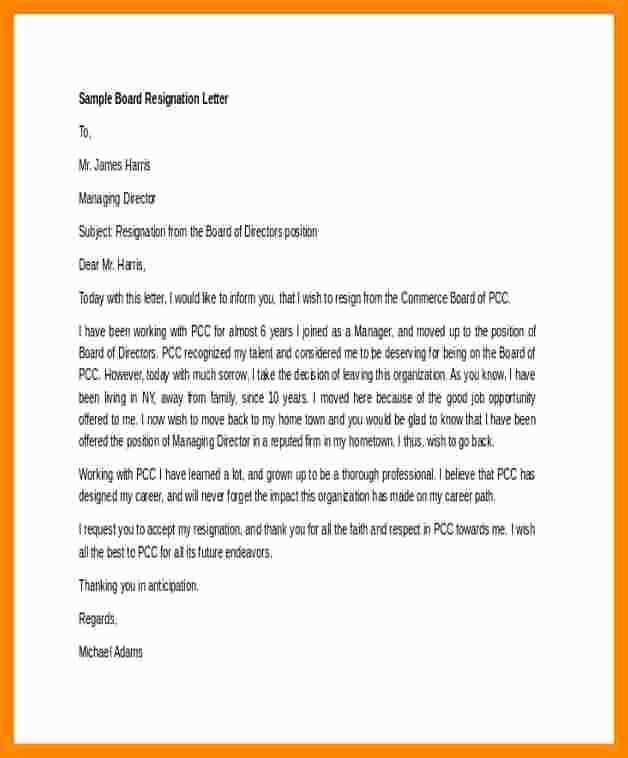
To ensure your formal notice leaves a lasting impression, it’s important to focus on both content and tone. A well-written message not only conveys your decision but also highlights your professionalism. By following these tips, you can make sure your communication is impactful and leaves the right impression.
- Be clear and concise: Avoid ambiguity by stating your decision clearly and without unnecessary elaboration.
- Express gratitude: Acknowledge the opportunities provided and express appreciation for your time with the organization.
- Offer assistance: If applicable, offer to help with the transition process, making it clear you’re willing to support the organization during this time.
- Maintain a positive tone: Keep the message optimistic and avoid mentioning any negative reasons for your departure.
Incorporating these elements into your communication ensures it’s not only professional but also leaves a positive, lasting impression as you move on from your role.